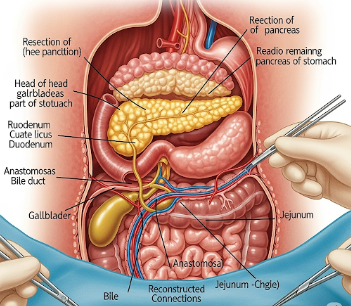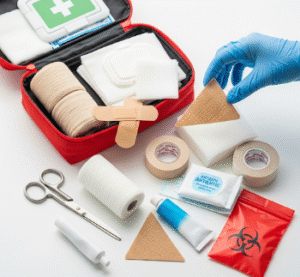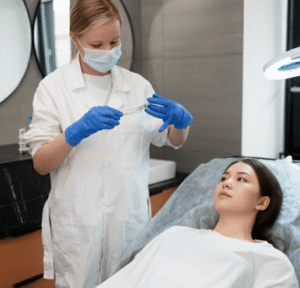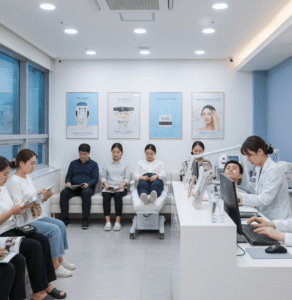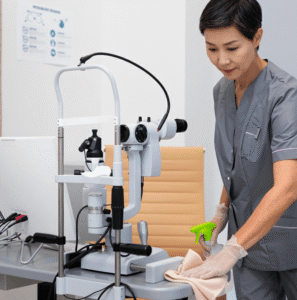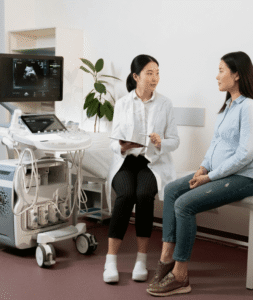Overview
The Whipple Procedure, also known as pancreaticoduodenectomy, is a complex surgical operation used to treat cancers and other disorders of the pancreas, bile duct, and duodenum. It involves the removal of the head of the pancreas, part of the small intestine (duodenum), gallbladder, and sometimes part of the stomach, followed by reconstruction to allow normal digestion.
South Korea is recognized for highly advanced hepatopancreatobiliary surgery, providing expert surgeons, modern operating rooms, and comprehensive postoperative care. Patients benefit from improved survival outcomes, advanced minimally invasive techniques, and structured recovery programs.
The Whipple Procedure is typically recommended for patients who:
- ➤ Have pancreatic head cancer or other malignant tumors of the pancreas
- ➤ Suffer from tumors in the duodenum or distal bile duct
- ➤ Require surgical management for chronic pancreatitis with obstruction
- ➤ Seek specialized care in a high-volume pancreatic surgery center
What is the Whipple Procedure?
The Whipple Procedure is a major surgical operation involving the removal and reconstruction of pancreatic, duodenal, and biliary structures to treat tumors or obstructive disease.
Key points:
- Often performed under general anesthesia
- Can be open surgery, laparoscopic, or robotic-assisted, depending on the patient and hospital capabilities
- Requires careful reconstruction of pancreatic, bile, and intestinal connections
- Korean hospitals utilize high-resolution imaging, intraoperative navigation, and multidisciplinary surgical teams for optimal outcomes
What are the Benefits?
✔ Potential curative treatment for pancreatic and periampullary cancers
✔ Restoration of digestive tract continuity after tumor removal
✔ Relief of obstruction in bile or pancreatic ducts
✔ Minimally invasive approaches reduce blood loss and recovery time in select cases
✔ Korean hospitals provide advanced perioperative care, ICU monitoring, and nutritional support
Additional benefits include:
- ➤ Early detection and resection can significantly improve survival rates
- ➤ Reduces symptoms of obstruction, including jaundice, nausea, and pain
- ➤ Multidisciplinary care ensures comprehensive support for surgical, nutritional, and rehabilitative needs
- ➤ High-volume Korean surgical centers have internationally recognized outcomes for Whipple procedures
Procedure Details:
1) How should I prepare for the Whipple Procedure?
- ● Medical evaluation: Extensive imaging (CT, MRI, or PET) to assess tumor size, location, and vascular involvement
- ● Laboratory tests: Complete blood count, liver and kidney function tests, coagulation profile
- ● Medical history: Review medications, comorbidities, previous abdominal surgeries, and allergies
- ● Preoperative counseling: Discuss procedure risks, expected recovery, and nutritional support
- ● Fasting: Typically required 8–12 hours before surgery
- ● Korean hospitals: Offer comprehensive preoperative assessment, 3D imaging, and multidisciplinary planning
2) What happens during the procedure Whipple Procedure?
- ➤ Anesthesia: General anesthesia is used for patient safety and comfort
- ➤ Surgical steps:
- Upper abdominal incision (open) or small laparoscopic/robotic ports
- Removal of the head of the pancreas, duodenum, gallbladder, and part of the stomach (if indicated)
- Reconstruction by connecting pancreatic duct, bile duct, and stomach to the small intestine
- Hemostasis ensured and abdominal closure completed
- ➤ Duration: Typically 4–8 hours depending on complexity
- ➤ Korean advantage: Use of robotic-assisted surgery, intraoperative navigation, and high-volume surgeon experience reduces complications and improves precision
3) What happens after the Whipple Procedure?
- ● Immediate care: Patient monitored in ICU for 24–48 hours; vital signs, drains, and fluid balance closely observed
- ● Pain management: Analgesics via PCA pump or epidural; gradual transition to oral medications
- ● Nutrition: Initially NPO (nothing by mouth), then gradual introduction of liquids and soft foods
- ● Activity: Early ambulation encouraged to prevent complications like pneumonia or blood clots
- ● Follow-up: Regular imaging, blood tests, and nutritional monitoring; assessment of pancreatic function and digestive tolerance
- ● Korean hospitals: Provide structured postoperative care, multidisciplinary rehabilitation, and specialized nutritional support
Risks / Benefits
✔ Benefits:
- ✦ Potential curative treatment for pancreatic and periampullary cancers
- ✦ Restoration of digestive tract continuity
- ✦ Symptom relief from bile or pancreatic obstruction
- ✦ Improved survival outcomes when performed at high-volume centers
⚠ Possible Risks (serious):
- ➔ Infection, including intra-abdominal abscess or wound infection
- ➔ Pancreatic fistula or leakage
- ➔ Bleeding during or after surgery
- ➔ Delayed gastric emptying
- ➔ Nutritional deficiencies or weight loss
- ➔ Cardiopulmonary complications, especially in patients with comorbidities
- ➔ Rare need for reoperation due to complications
Recovery and Outlook
- ➤ Immediate recovery: ICU monitoring for first 24–48 hours, followed by step-down unit care
- ➤ Hospital stay: Typically 7–14 days depending on recovery and absence of complications
- ➤ Long-term outlook: With complete tumor resection, survival rates improve; follow-up includes oncology, nutrition, and digestive monitoring
- ➤ Korean advantage: Hospitals provide multidisciplinary postoperative care, early mobilization programs, and nutritional support for optimal recovery
When To Call the Doctor
Contact your medical team if you notice:
- ⚠ Fever, chills, or signs of infection
- ⚠ Persistent abdominal pain or swelling
- ⚠ Drainage changes or abnormal bleeding from incision
- ⚠ Nausea, vomiting, or inability to tolerate food
- ⚠ Unusual fatigue or jaundice
Best Korea Option / Process
South Korea is a world leader in hepatopancreatobiliary surgery, including the Whipple Procedure, due to:
- 🌟 Highly experienced pancreatic and hepatobiliary surgeons
- 🌟 High-volume centers with advanced robotic and laparoscopic capabilities
- 🌟 Structured ICU and postoperative care for high-risk patients
- 🌟 Multidisciplinary teams including oncology, nutrition, and rehabilitation specialists
- 🌟 Multilingual support for international patients seeking advanced pancreatic surgery
Top Korean Hospitals for Whipple Procedure:
- ✅ Seoul National University Hospital (Pancreatic & Hepatobiliary Surgery)
- ✅ Asan Medical Center
- ✅ Samsung Medical Center
- ✅ Severance Hospital (Yonsei University)
- ✅ Bundang CHA Hospital
✅ Quick Highlights Recap
- ➤ Complex surgical procedure for pancreatic, duodenal, or bile duct tumors
- ➤ Potentially curative with restoration of digestive tract continuity
- ➤ High-volume Korean centers provide advanced minimally invasive or robotic-assisted surgery
- ➤ Structured postoperative care including ICU monitoring, nutrition, and rehabilitation
- ➤ Rare but serious complications; manageable with expert care and follow-up

